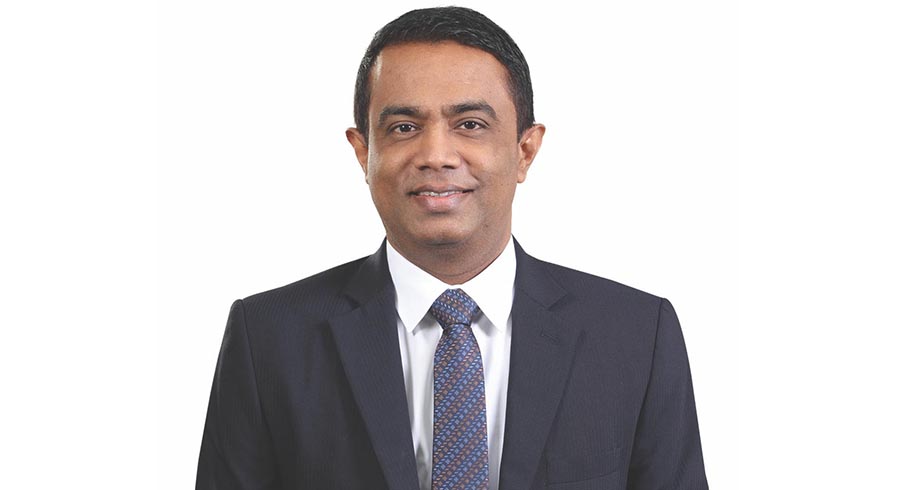For too long, insurance has been seen primarily as a safety net, something that protects individuals and businesses in times of crisis.
While this is true, it is also only part of the picture. Insurance is a powerful economic enabler, a partner in national development and a driver of resilience.
By mobilising long-term capital through premiums, the industry contributes to the funding of infrastructure, supports healthcare and retirement systems and provides liquidity that strengthens financial markets.
Insurance as an Economic Enabler and Closing the Protection Gap
Through Gross Written Premiums (GWP), insurers collect vast pools of capital that are for the most part invested in G-Sec Securities creating resources for infrastructure projects, renewable energy and national development programmes.
This steady flow of capital into long-term investments is what gives insurance its unique position as both a social stabiliser and an economic driver.
In Sri Lanka, with GWP increasing from Rs. 106.5 billion in 2020 to Rs. 187.6 billion in 2024, this reflects sustained investor and consumer confidence in the sector.
Yet, despite these strengths, Sri Lanka still lags behind its regional peers. Insurance penetration currently stands at just over one per cent of GDP.
This is significantly lower than in countries like India and Indonesia, which, despite larger and more complex markets, have been able to widen access and deepen protection.
The implications of this gap are visible in several areas of daily life.
Household property insurance remains low unless tied to mortgages, leaving families exposed to natural disasters, fire or theft.
Health insurance is another pressing gap where private healthcare costs are currently 2.6 times higher than public sector rates, a burden that many households simply cannot manage.
Without broader penetration and better protection, millions of Sri Lankans remain vulnerable to risks that could push them into financial distress.
To close this gap, the industry must focus on designing inclusive products, using technology to broaden access, and creating trust through transparent service.
Insurance should not be viewed as a luxury for the few, but as a necessity for all.
Innovation, Digitalisation and Financial Literacy
One of the most promising developments in the sector is the rapid pace of digital transformation.
Sri Lanka is home to a rising generation of digitally native consumers who value convenience, speed and personalised solutions.
These customers are looking for mobile-first experiences, where buying a policy, making a claim or receiving an update can be done at the touch of a button.
For insurers, this presents both a challenge and an opportunity.
By embracing digital platforms, artificial intelligence and automation, the industry can deliver fairer pricing, faster claims and more transparent processes.
Digitalisation also reduces barriers in awareness and time, enabling more Sri Lankans to engage with insurance products they might otherwise have overlooked.
At the same time, strengthening financial literacy is crucial.
Sri Lanka has near-universal gross enrolment and completion rates in primary and lower secondary education, close to 100% for both genders.
This provides a strong base of human capital.
Yet, when it comes to financial literacy, the picture is less encouraging.
Many households still lack a clear understanding of insurance and financial management and this knowledge gap translates into low uptake and high policy lapses.
Awareness programmes, school-level education and community engagement initiatives must therefore form part of a long-term strategy to shift perceptions.
When people understand that insurance is an investment in security, demand will naturally increase.
Demographic Shifts and Emerging Needs
The demographic landscape of Sri Lanka is undergoing a profound transformation.
The country is experiencing one of the fastest ageing processes in South Asia, creating new demand for health and retirement products.
The fertility rate has fallen from 2.09 in 2015 to 1.94 in 2025, well below the replacement level of 2.1.
This signals a shrinking youth base and foreshadows potential labour shortages in the decades ahead.
Meanwhile, the median age has risen from 30.7 years in 2015 to 33.3 years in 2025, evidence of a maturing population with evolving protection needs.
Non-communicable diseases (NCDs), urbanisation and lifestyle changes are also reshaping the demand for health and life insurance.
Families increasingly require cover that supports long-term medical expenses, critical illnesses and retirement planning.
Migration patterns too are changing.
Unlike in the past, when many left rural areas out of necessity, today migration is driven more by economic aspirations, as improvements in rural service delivery have reduced distress migration.
These shifts show that consumers are more discerning, more mobile and more digitally savvy.
Insurers must adapt to this reality by offering products that are flexible, affordable and tailored to individual needs.
A Collective Vision for the Future
Looking forward, the insurance industry in Sri Lanka has both an obligation and an opportunity to play a greater role in national development.
By expanding penetration, mobilising capital for development and ensuring broader protection, the industry can contribute directly to economic resilience.
But this cannot be achieved by insurers alone.
Partnerships with banks, healthcare providers, telecommunications companies and technology firms will be essential to creating a connected ecosystem that delivers wider access and better service.
The path to success lies in inclusivity, innovation and trust. Inclusivity means ensuring that every citizen, regardless of income level or geography, has access to adequate protection.
Innovation ensures that the industry remains agile, competitive and aligned with international best practices.
Trust is the foundation that allows customers to know that their policies will be honoured, their claims respected and their contributions valued.
Insurance is about building resilience at both household and national levels.
It is about ensuring that families can face the future with confidence and that the nation has the financial strength to invest in its development.
By recognising insurance as a strategic driver of progress, Sri Lanka can tap into the full potential of this sector to build a more prosperous and secure future.
(The writer is the President of the Insurance Association of Sri Lanka)


